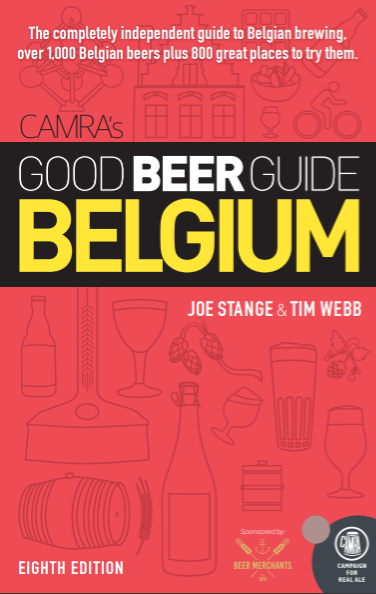When a top-notch craft brewery is at the center of civic life, you know you’re in a good town. That’s the setup in Gooik, about a half-hour west of
OK, nerd, if you want to get technical: De Cam isn’t a brewery. It’s a blender, and what it blends are lambics. De Cam’s own lambics happen to be some of the most funkiest, most tartest beers in the world—in a good way. On Wednesday we went to sample the goods at the source.
Next to other lambic makers, De Cam is just a baby. When it started putting out beers in 1997, there hadn’t been a new blender in
Yet De Cam is more than a beer maker—it’s the ultimate hub of local culture. It’s a community center that hosts clubs and events. It’s also a museum devoted to old musical instruments and folk art. (In
But still, this is Pajottenland. And here there is arguably no folk art more important than the brewing and blending of spontaneously fermented beer. The flavor of traditional lambic is arguably the flavor of this region. And Pajottenland, if you don’t know, tastes intensely sour and fruity. Incidentally, it also smells like a barn decorated with old gym socks.
 That’s right, sonny, take a deep whiff. That there is the odor of craftsmanship.
That’s right, sonny, take a deep whiff. That there is the odor of craftsmanship.
Looking for our next beery life experience, our destination was the café. Because that’s the place where you drink.
Like so many other great Belgian beer cafes, the De Cam Volkscafe is largely populated by older gents. You’re free to imagine a bunch of geezers sipping the authentic, sour stuff from crockery mugs if you like. Ah, it’s a romantic notion. Unfortunately it ignores the well-known law against old Belgian men drinking interesting beer. By royal decree (as far as I can tell) all Flemish and Walloon gents beyond a certain age are required to drink Jupiler or Maes,
So that’s the scene: Plenty of wood and breweriana and old guys sipping lager for lunch. It’s a pleasant scene, though, one made pleasanter by the tweets and tweedles of singing finches, whose cages sit in the middle of the room. Finch-singing competitions, if you don’t know, are a serious sport in
Damn it! Weren’t we about to drink some beer? On the menu—written in a local dialect that we suspect nobody actually speaks—there's a list of more than 30 different bottles beers, with plenty of quality. But that’s not why we’re here. Available on cask are De Cam’s own lambic and kriekenlambic, plus the Oude Gueuze in bottles. Except that they’re not all available. Not for us, anyway.
It turns out that the man himself—blendmeister Karel Goddeau—who plies his trade all of 40 feet from where we sit, hasn’t delivered beer to the café in more than a month. Out for the holidays, apparently. All they’ve got left is the kriekenlambic, which suits us just fine. They get respect for serving it in those old-school, stoneware type mugs—a bit cold at first, but once it warms the tart fruit really comes out and punches you in the face.
It’s delicious, and the acidity gets my belly roiling for food. Now.
So we hike up the road to a well-regarded spot called the Groene Poort. Behind the green door is not Marilyn Chambers, but a nice enough lady working all by her lonesome. We’re the only customers. Despite a chalkboard placard promising eel in green sauce and other treats, we’re told the only options are spaghetti or sandwiches. With stomachs demanding something to dissolve immediately, we’re in no condition to argue. All worries vanish as we wash the pasta down with some Girardin gueuze. Black label. The good stuff.
About De Cam: Show up on Sunday afternoon if you want a tour. That’s my plan for next time. Hopefully the café will be lucky enough to re-stock its beers by then. And maybe I’ll be lucky enough to munch on something long and snakey and covered in green sauce.
Yum.






No comments:
Post a Comment